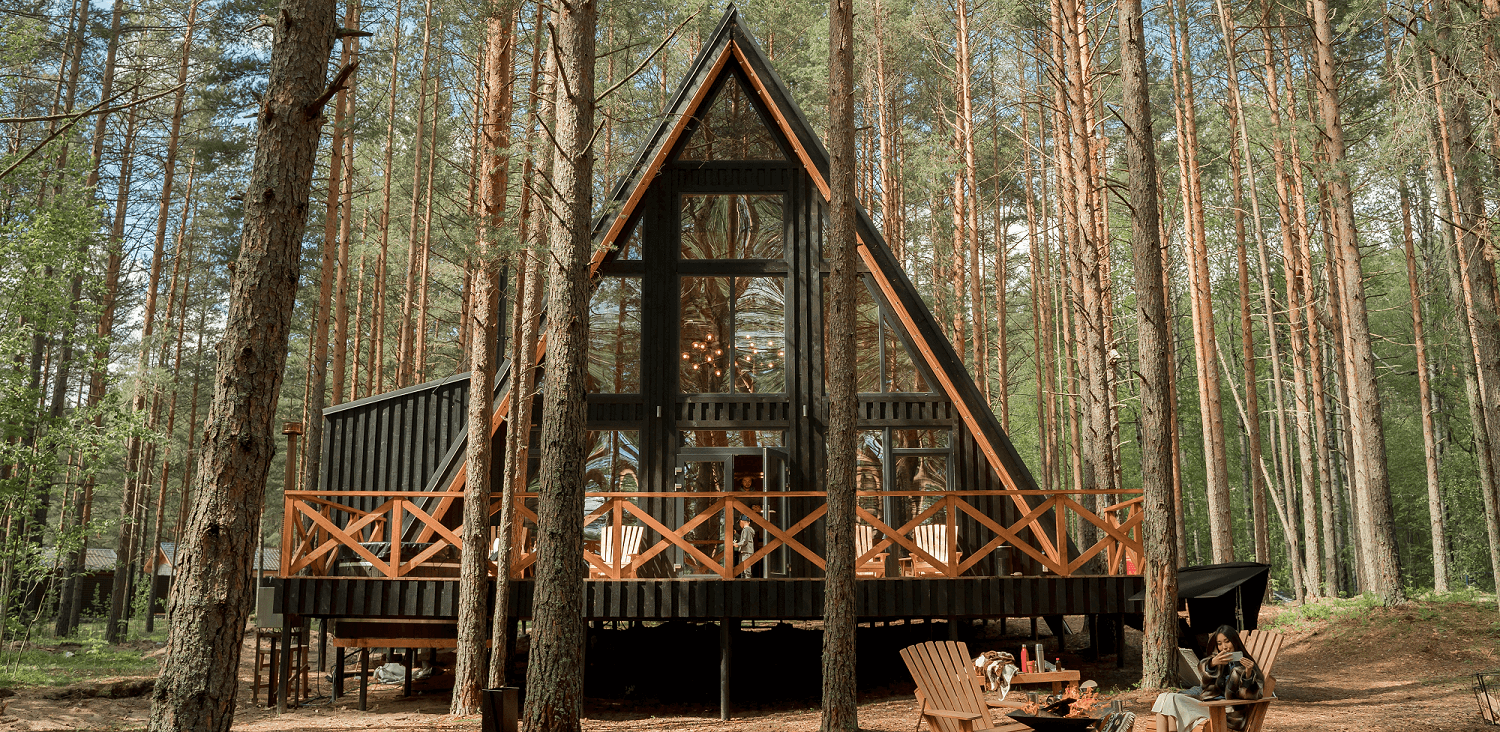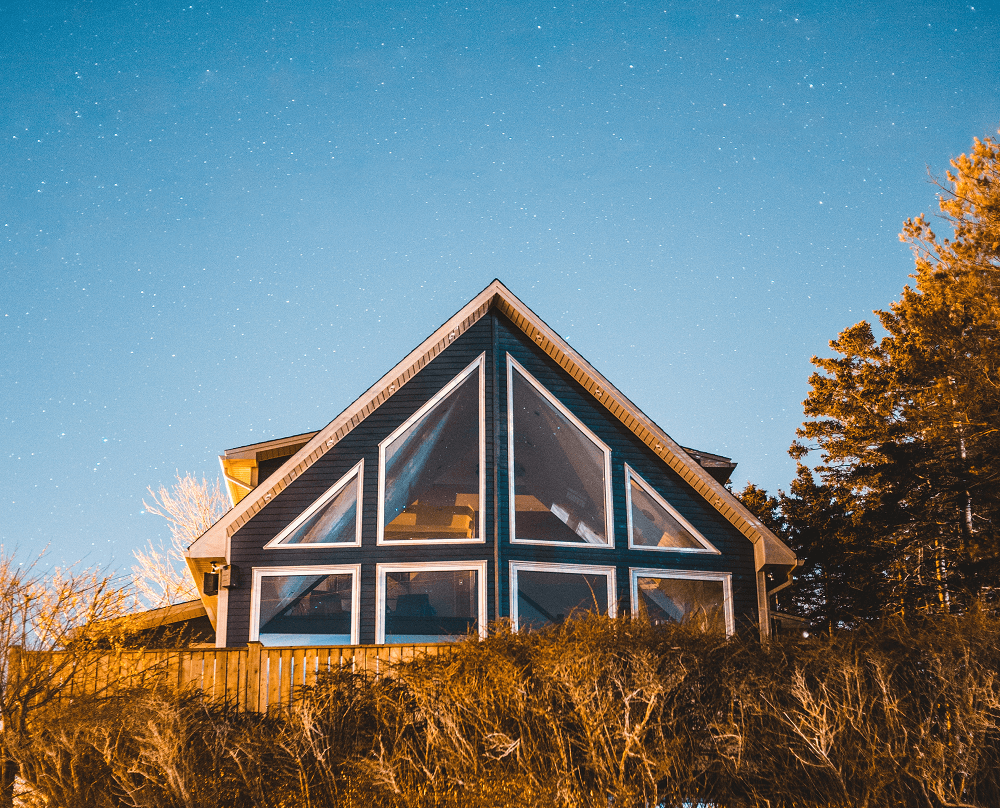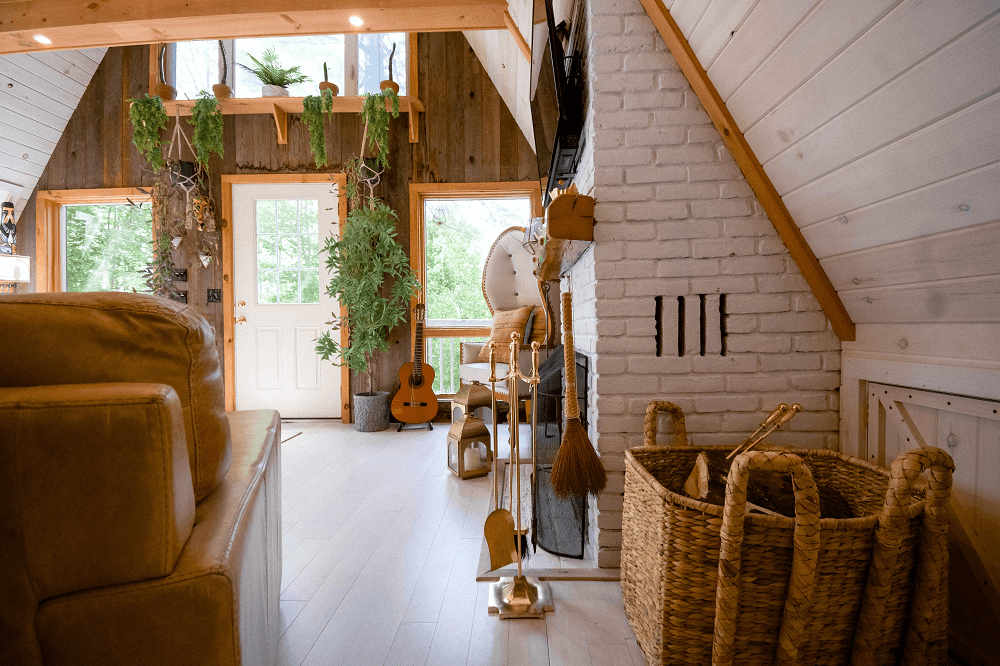6 Challenges of Designing an A-Frame House

When you think of A-frame houses, you probably envision a rustic cabin in the woods or a cozy cottage on a lake. And while those are great examples of what an A-frame can be, other locations are excellent for the style. The main feature that defines an A-frame is the triangular shape and sloping roofline. Dean Larkin Design is currently working on a modern, beautiful A-frame project in Joshua Tree, so the firm is experienced with managing the unique challenges of an A-frame home. Below we explore some of the common challenges involved with designing an A-frame house and how to overcome them.
6 A-Frame House Design Challenges
A-frame houses are a great choice for those looking to make their living space unique and efficient. The design can make use of a property’s natural slope, which allows for building with a small footprint. This is especially helpful when you are building on a steep hill or in a remote location where space is at a premium.
While A-frame houses are relatively easy to build, they do come with some design challenges that you will need to consider before engaging an architect and starting construction. Here are some things to keep in mind when designing and building your A-frame house:
Creating a Spacious Feel
In an A-frame house, balancing the living space so that it feels spacious and modern while keeping with the spirit of an A-frame is one challenge. Part of this challenge is to create an open floor plan with a sloped roof. One way to do this is by using sliding doors and windows, which allow you to maximize the use of your space.

By removing walls, architects can create a sense of openness that makes the house feel larger than it really is. And by using glass, one gets a sense of openness and a feeling that you are part of your environment.
Balancing Privacy and Views
One of the benefits of an A-frame house is that you can have views from multiple sides of the structure. However, this also means that occupants will have less privacy than they would have in a traditional home. If you are planning on using this type of architecture for your home project, think about how much privacy you need from each room and choose windows accordingly. Your contemporary architect may also choose to add some interior walls to create more private areas within the home.
Maximizing Natural Light
Another challenge of building an A-frame house is ensuring that the interior enjoys good natural light throughout the day. One way to design an A-frame home to maximize natural light is to mix materials with different reflective properties: light woods, dark woods, white walls and glass. This will help bounce natural light around spaces. Well placed skylights and large windows also allow more natural light into a home.
Creating Adequate Storage Space
In most houses, especially small ones, storage is a concern. The more square footage you have, the more room there is for storage cabinets and closets. But in an A-frame home, space is at a premium and the unique shape of the roof means that less room is available for storage inside or out. With less room, architects have to be creative when it comes to storing belongings without sacrificing aesthetics.

Designing the Kitchen
The kitchen is another challenge when designing an A-frame house. Most homeowners want kitchens to be functional, open, and updated for modern needs. Meeting all these needs is a challenge because fewer options are available for adding counter space or cabinets without making the kitchen feel cramped or cluttered. Since an A-frame house often lacks walls to separate rooms, they lack privacy or soundproofing. Architects come up with ways to control the acoustics and reduce the noise in surrounding areas.
Incorporating Stairs
The stairs in a traditional home have a clear purpose: they connect one floor to another. In an A-frame home, they have more than one function. They allow people to move between floors, but they also serve as storage space for things like blankets and pillows that normally live on the bed. One option is to build an open staircase inside the house and use smaller steps (two or three per flight) rather than larger ones that would take up more room.
Contact Dean Larkin for Exceptional Contemporary Design in California
Dean Larkin Design was established in Los Angeles in 1999 and this modern architecture firm maximizes the intrinsic potential of a location, including its available natural light sources and views. Dean Larkin is very familiar with both historical and contemporary design in the entire Los Angeles area, and the firm endeavors to achieve a complexity that is multi-layered with an effortless elegance. For more information about designing an A-frame house or for a design that is modern and innovative, unlocks your location’s innate potential by making specific use of light, views and more, and uniquely designed for the way you live, contact Dean Larkin for a consultation.